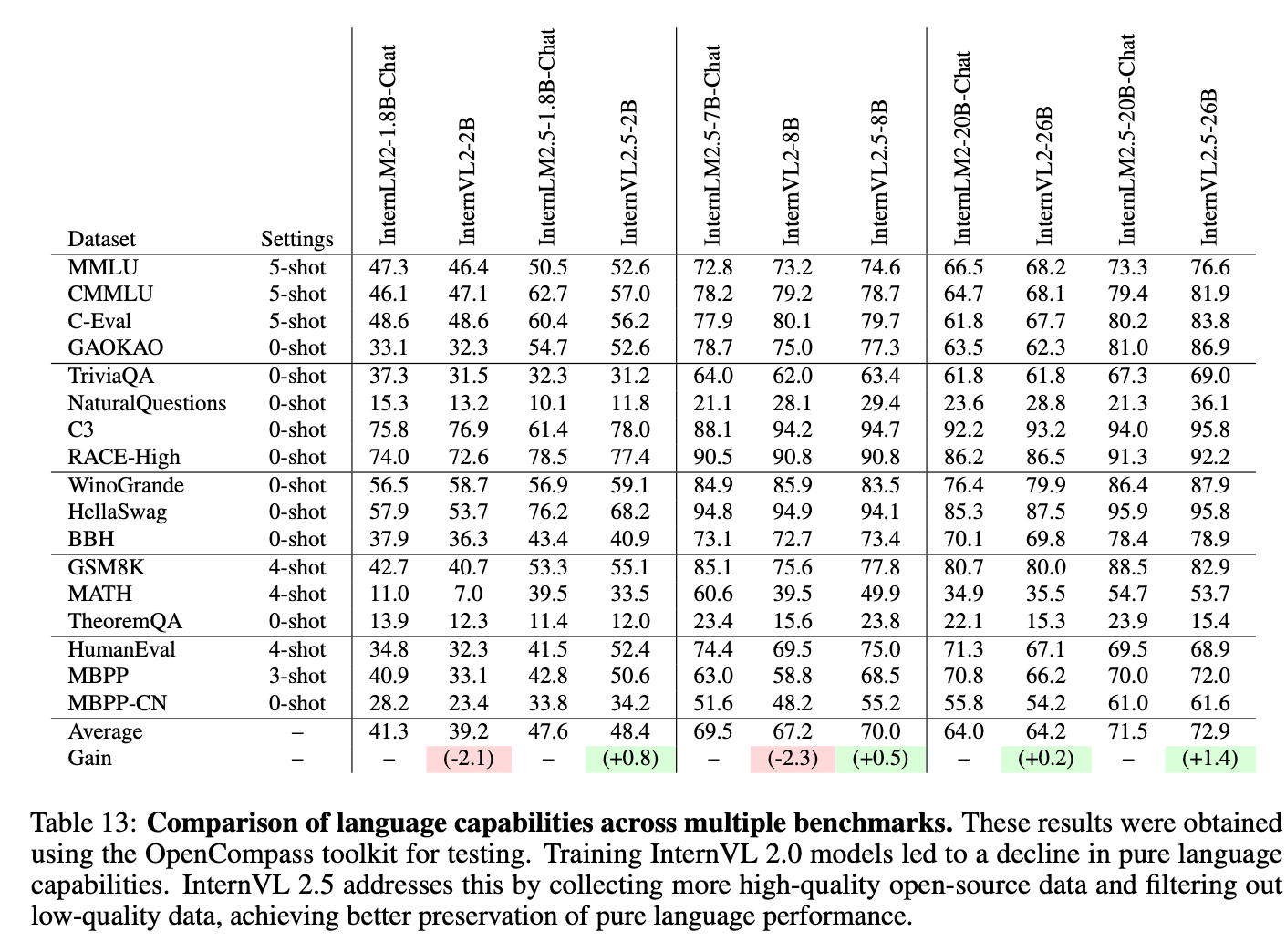[MM] InternVL-2.5: Expanding Performance Boundaries of Open-Source Multimodal Models with Model, Data, and Test-Time Scaling
[MM] InternVL-2.5: Expanding Performance Boundaries of Open-Source Multimodal Models with Model, Data, and Test-Time Scaling
- paper: https://arxiv.org/pdf/2412.05271
- github: https://github.com/OpenGVLab/InternVL
- Technical report (인용수: 5회, ‘25-01-08 기준)
- downstream task: Multi-modal reasoning, document understanding, multi-image/video understanding, multi-modal hallucination detection, visual grounding, multilingual capabilities, etc
1. Motivation
-
Closed-source models (Chatgpt-4o, Gemini, Claude, etc)와 open-source model간의 성능 격차를 줄이고자 함
-
MLLM의 Vision Encoder 크기에 따른 성능에 기여하는 정도를 정리하고자 함
$\to$ Parameter가 많아질수록 학습 데이터의 dependency가 줄게됨 (큰 모델 사용할수록 적은 양의 학습데이터로 성능이 좋아짐)
- ex. 1/10만으로 6B ViT+InternVL2.5-78B가 600M ViT+Qwen2-VL-72B보다 좋아짐
2. Contribution
-
InternVL-2.5를 opensource community에 공개함
-
Model의 component별 parameter Scaling이 performance에 미치는 영향에 대해 깊이 있는 탐구를 함
-
다양한 Multimodal task에서 SOTA를 달성함
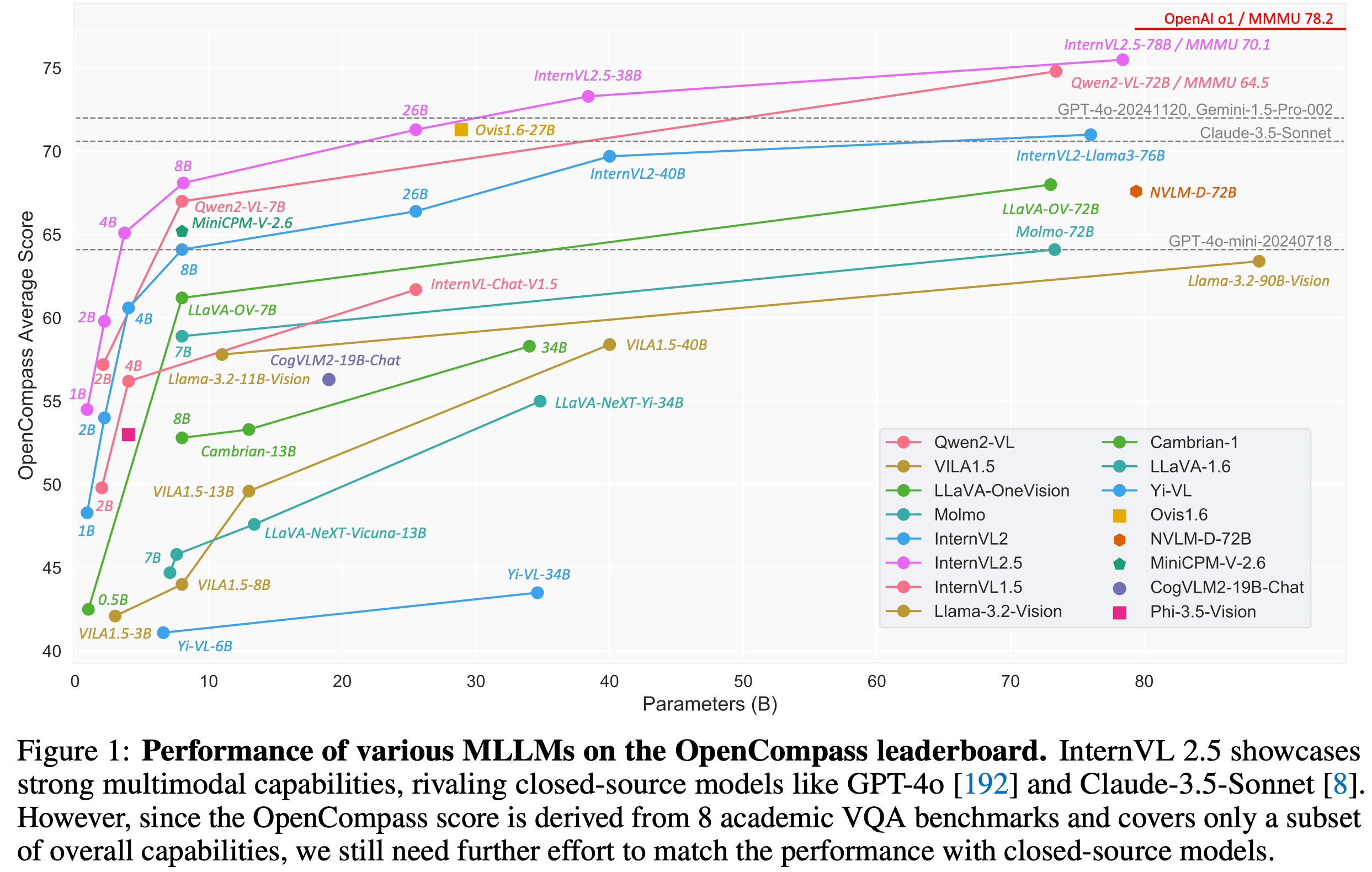
3. InterVL-v2.5
-
overall architecture
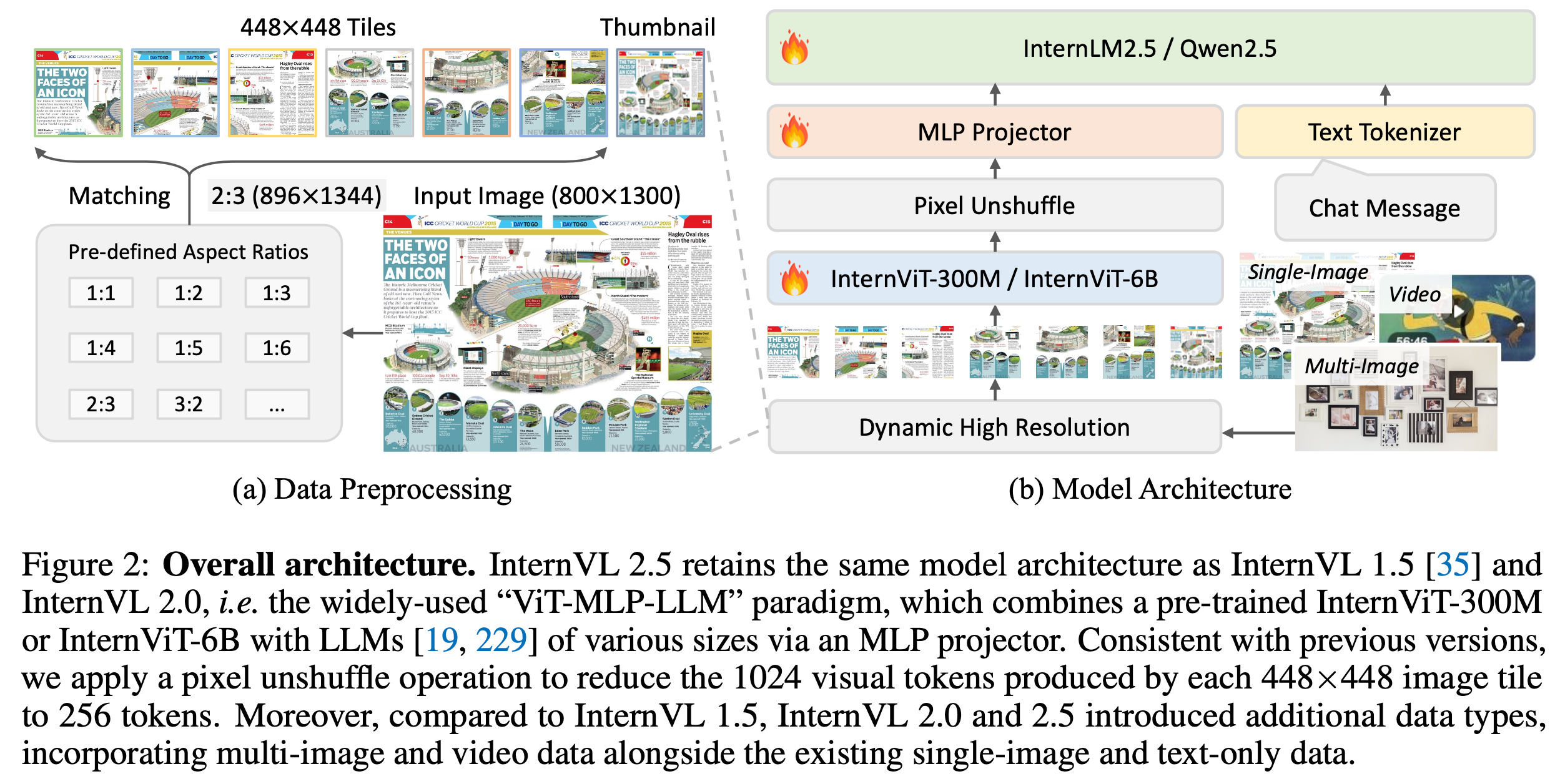
- Pixel Unshuffle: visual token을 4배 줄이는 효과
3.1 Vision Encoder
-
parameter 수 (6G, 300M), fixed & dynamic에 따라 실험

3.2 Large Language Model
-
다양한 LLM backbone으로 실험
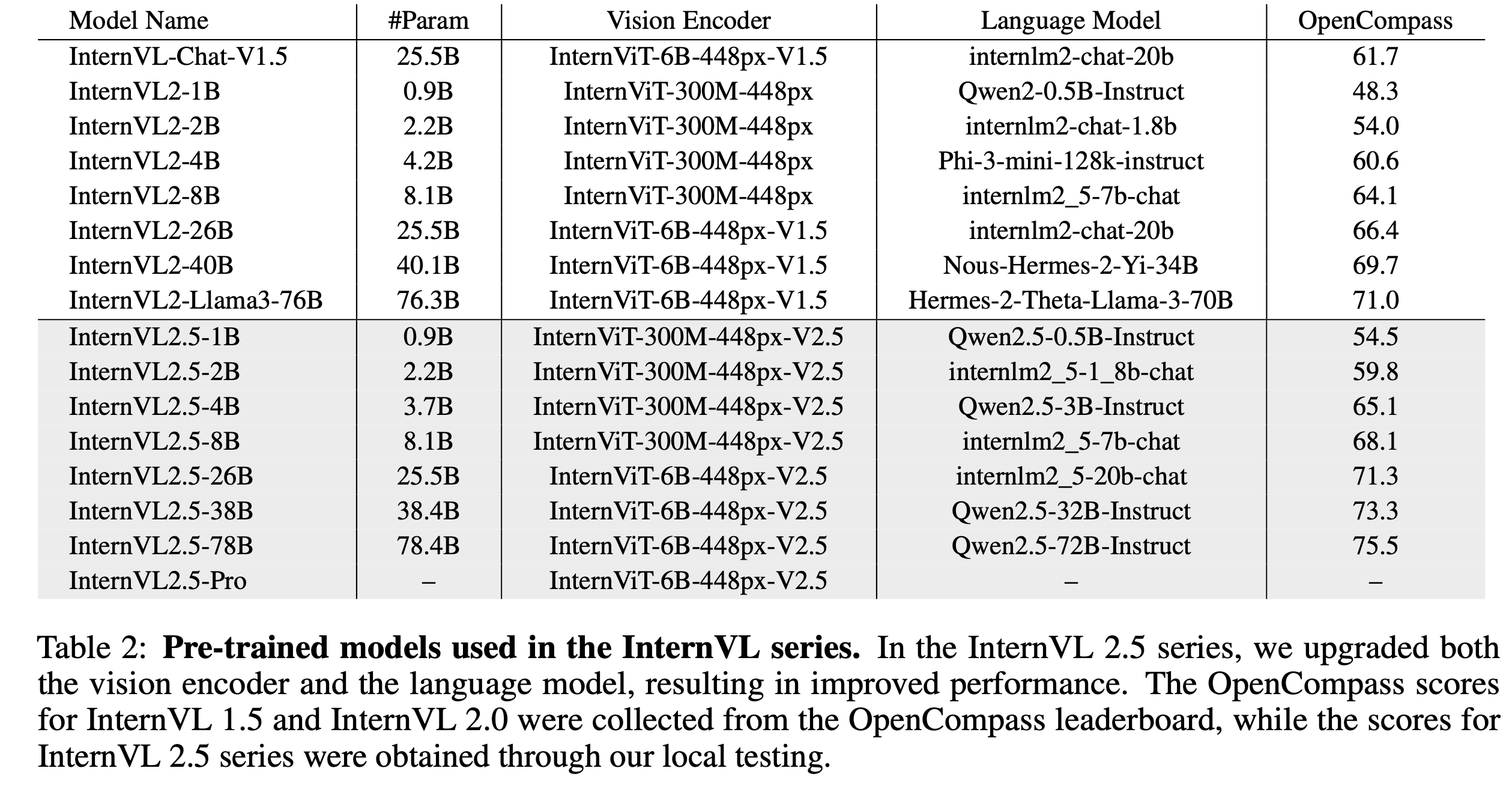
3.3 Training Strategy
-
Dynamic High-Resolution for Multimodal Data
-
Closest Aspect Ratio Matching


-
Image Resize & Split: $ S \times S$개의 이미지로 split

-
Data formats
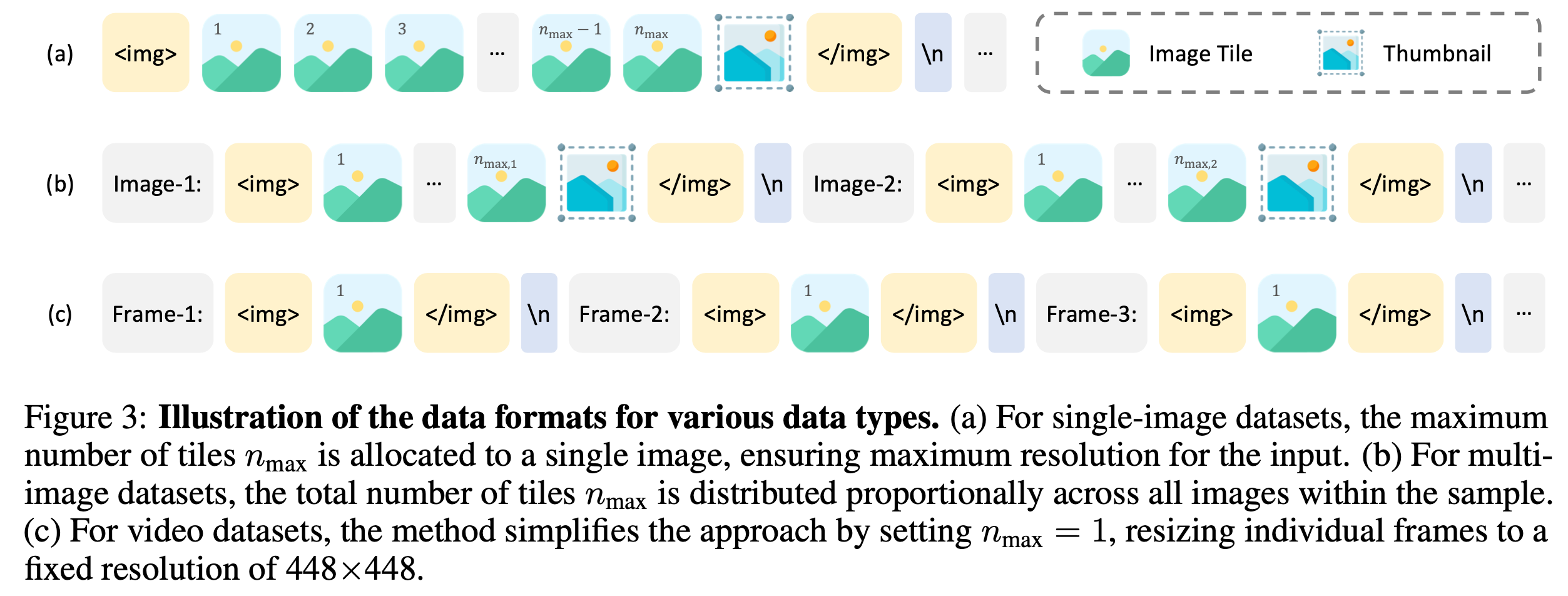
-
Video: $n_{tiles}=1$로 고정하되, thumbnail만 사용
-
Multi-image: $n_{tiles} < n_{max}$로 bound시키되, image-n을 앞아 붙임.
-
$n_{max}$는 전체 이미지 갯수 ($N_{image}$)로 나눔

-
-
Single-Image: $n_{tiles} < n_{max}$로 bound시키되, thumbnail image를 마지막에 붙임
-
-
-
Training Pipeline
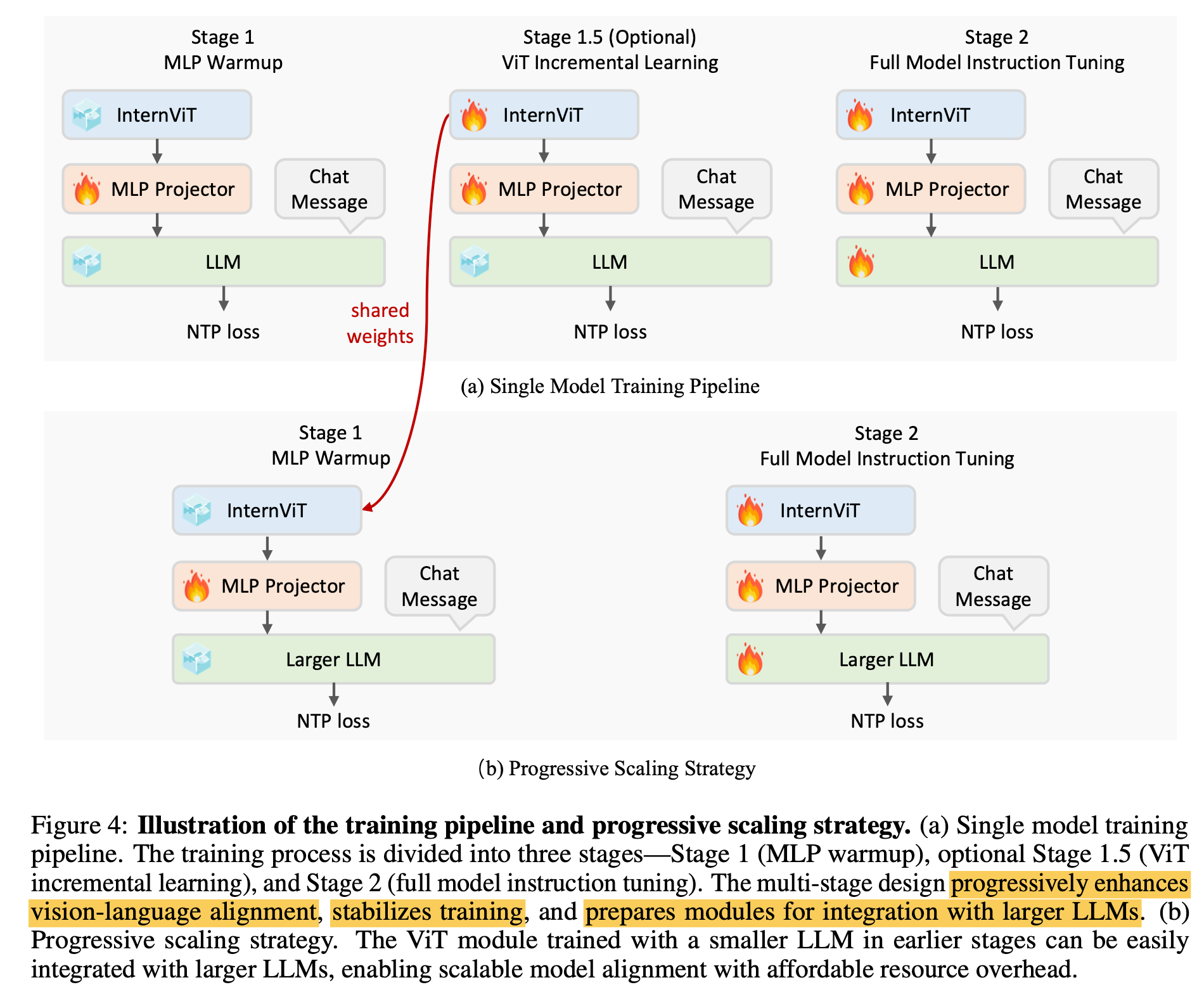
-
3개의 pipeline로 학습
-
Hyper-parameters
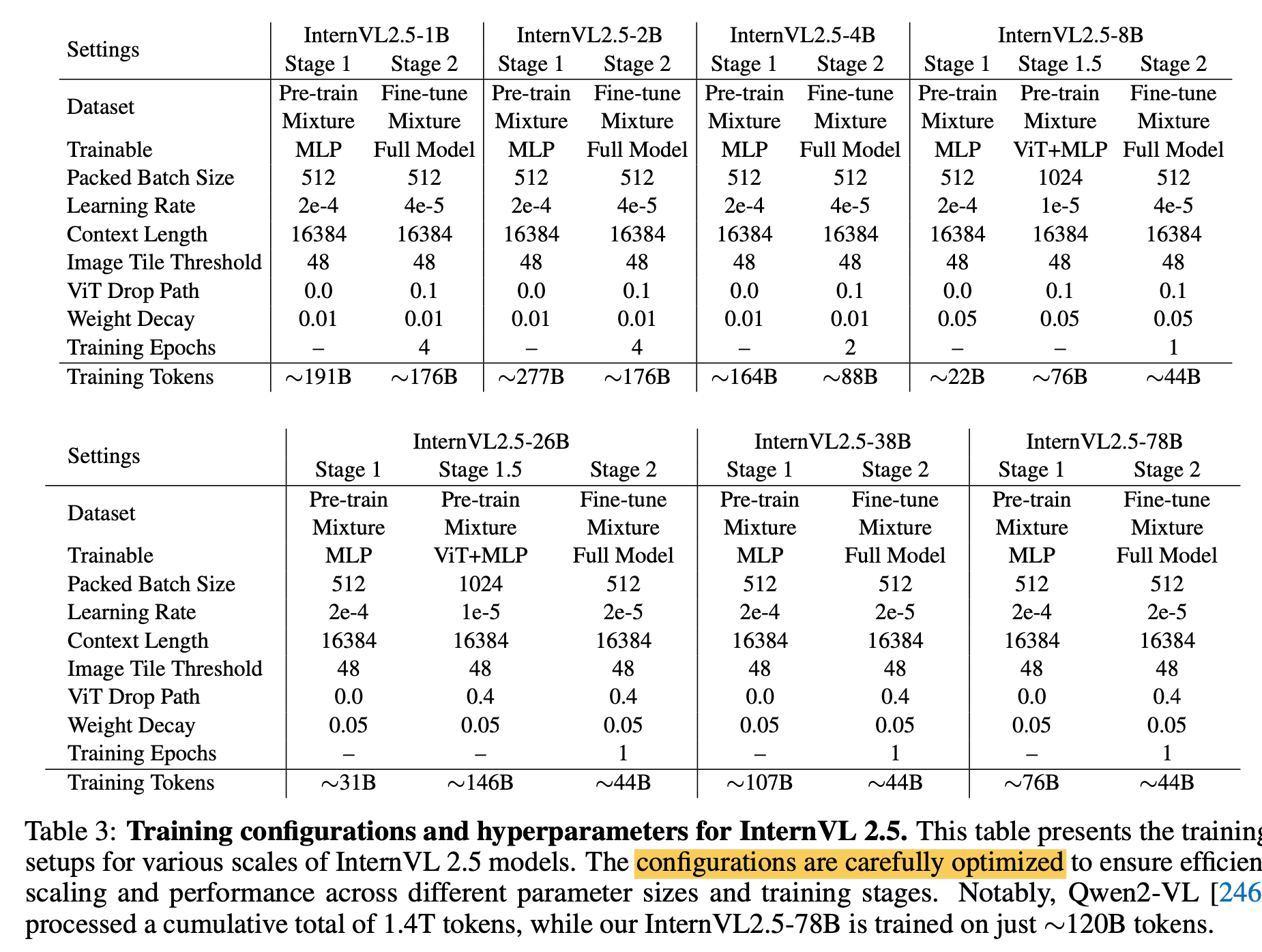
- Stage 1: MLP Warmup
- MLP만 학습하여, visual & language representation alignment 역할
- Chat ML style의 instruction으로 NTP loss로 학습
- High Learning Rate로 학습
- Stage 1.5: ViT Incremental Learning
- MLP+ViT를 학습
- NTP Loss로 학습
- Low Learning Rate 사용하여 catastrophic forgetting 방지
- Stage 2: 모든 module에 대해 unified LR적용
- Stage 1: MLP Warmup
-
Datasets
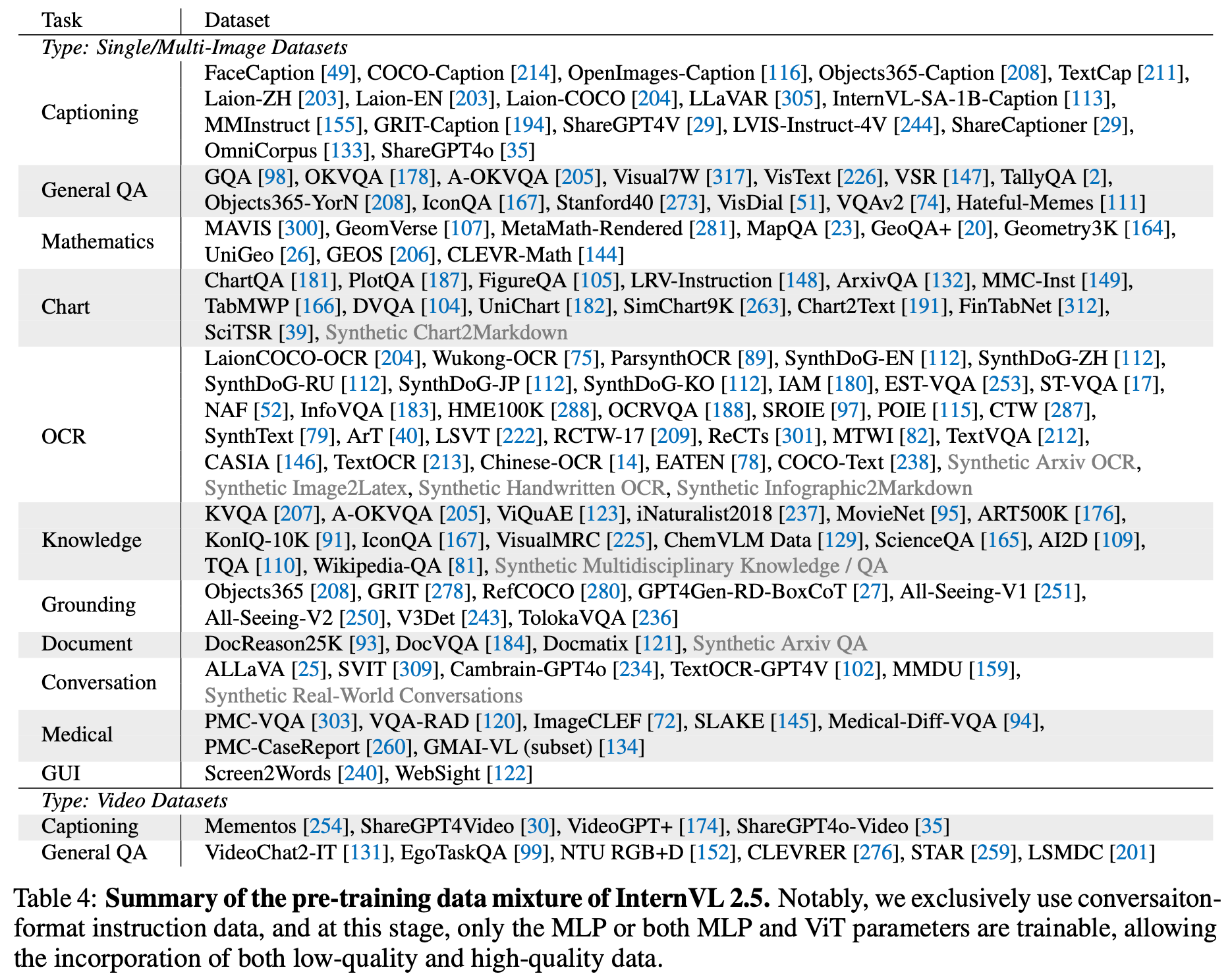
-
-
-
Progressive Scaling Strategy
- 작은 LLM (ex. 28B) Stage 1.5에서 학습한 ViT를 큰 LLM (ex. 78B)에 그대로 사용하는 방법
- 가설: visual feature는 일반화된 representation이므로, LLM이 바뀌어도 잘될것임
- 장점: 다른 LLM backbone에 transferability가 좋아짐 (stage 1, stage 1.5를 skip하기 때문에 좋음) $\to$ 학습이 가속화됨
-
Training Enhancements
-
Random JPEG Compression
- Image의 경우, JPEG으로 압축된 이미지가 입력으로 많기 때문에 augmentation으로써 활용
-
Loss Reweighting

-
Token averaging: Mini-batch 내에서, 전체 token에 대해 loss계산 시, averaging 수행
- 단점: 정답이 긴 sample에 bias되어 성능 하락 발생 가능
-
Sample averaging: Mini-batch 내에서 loss계산 시, sample별로 averaging 수행
- 단점: 짧은 답변 생성 우려
$\to$ 적절한 조합 (square averaging)으로 weight를 변경 $w_i=\frac{1}{w^{0.5}}$
-
-
3.4 Data Organization
-
Dataset Configuration

- Maximum tile number ($n_{max}$), repeat factor ($r$)등으로 balanced된 데이터로 학습시킴
- 그밖에 다양한 engineering으로 학습 효율을 높임 (ex. multi-image 입력 시, longer sequence로 concat 후 학습으로 zero padding 최소화)
-
Data filtering
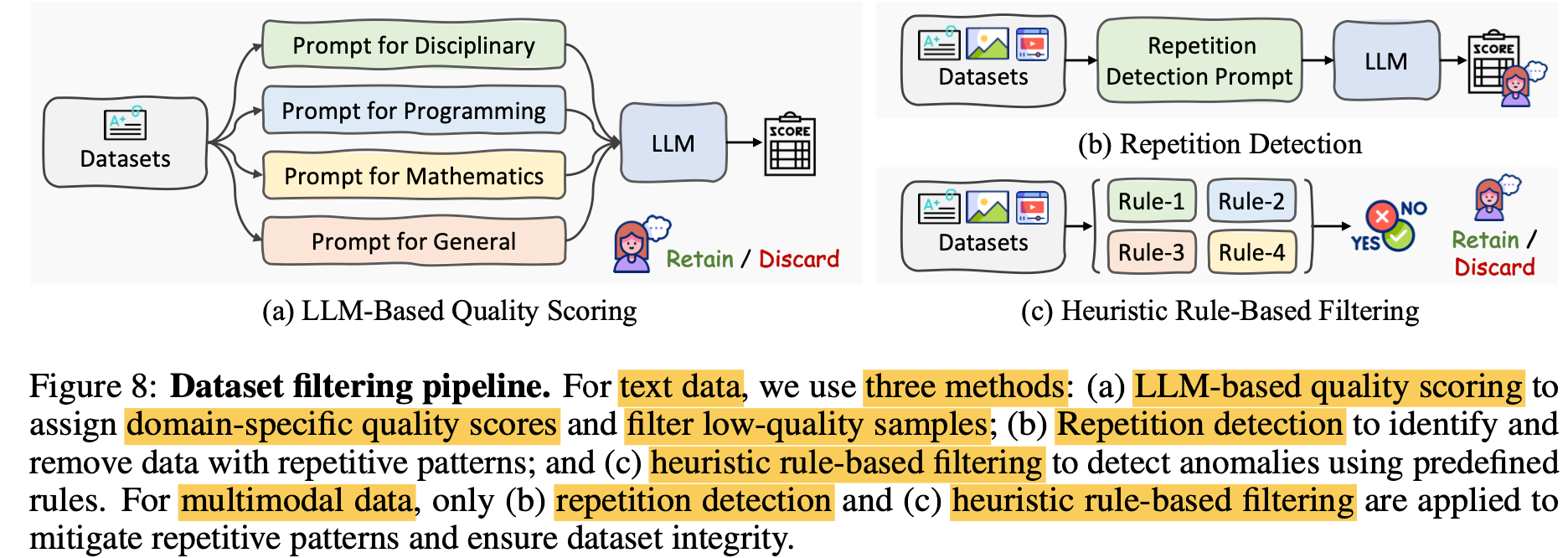
-
LLM은 소량의 anomal sample에 민감하게 반응하는 경향을 발견함 $\to$ filtering하면, CoT task에서 성능이 비약적으로 향상됨
-
LLM기반 Quality scoring: LLM의 힘을 빌려, domain specific prompt로 샘플에 대해 평가
-
Repetition Detection: 단순 반복 샘플 필터링
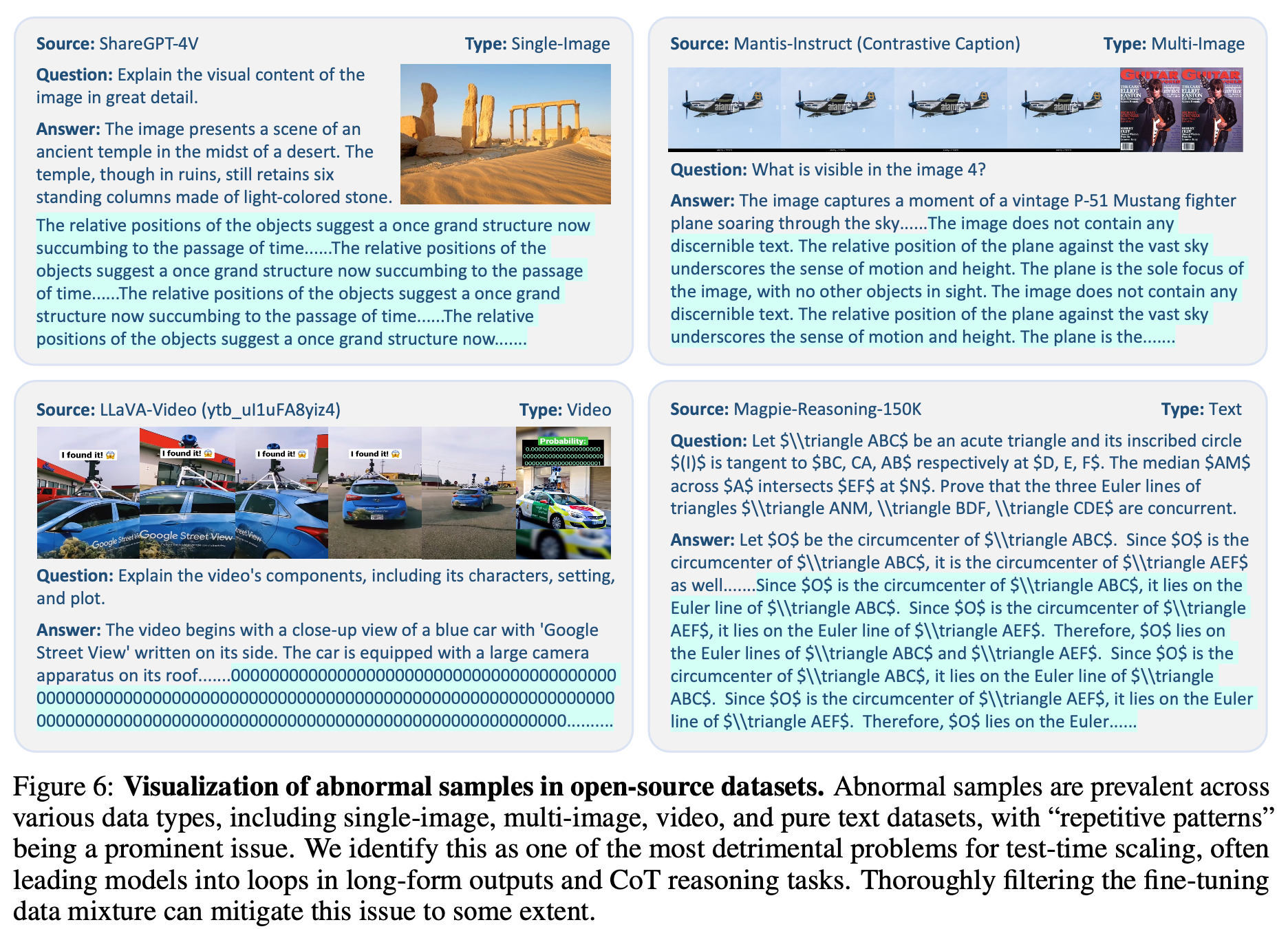
-
Heuristic Rule-based Filtering: 매뉴얼하게 필터링
-
-
-
Finetuning Data Mixture
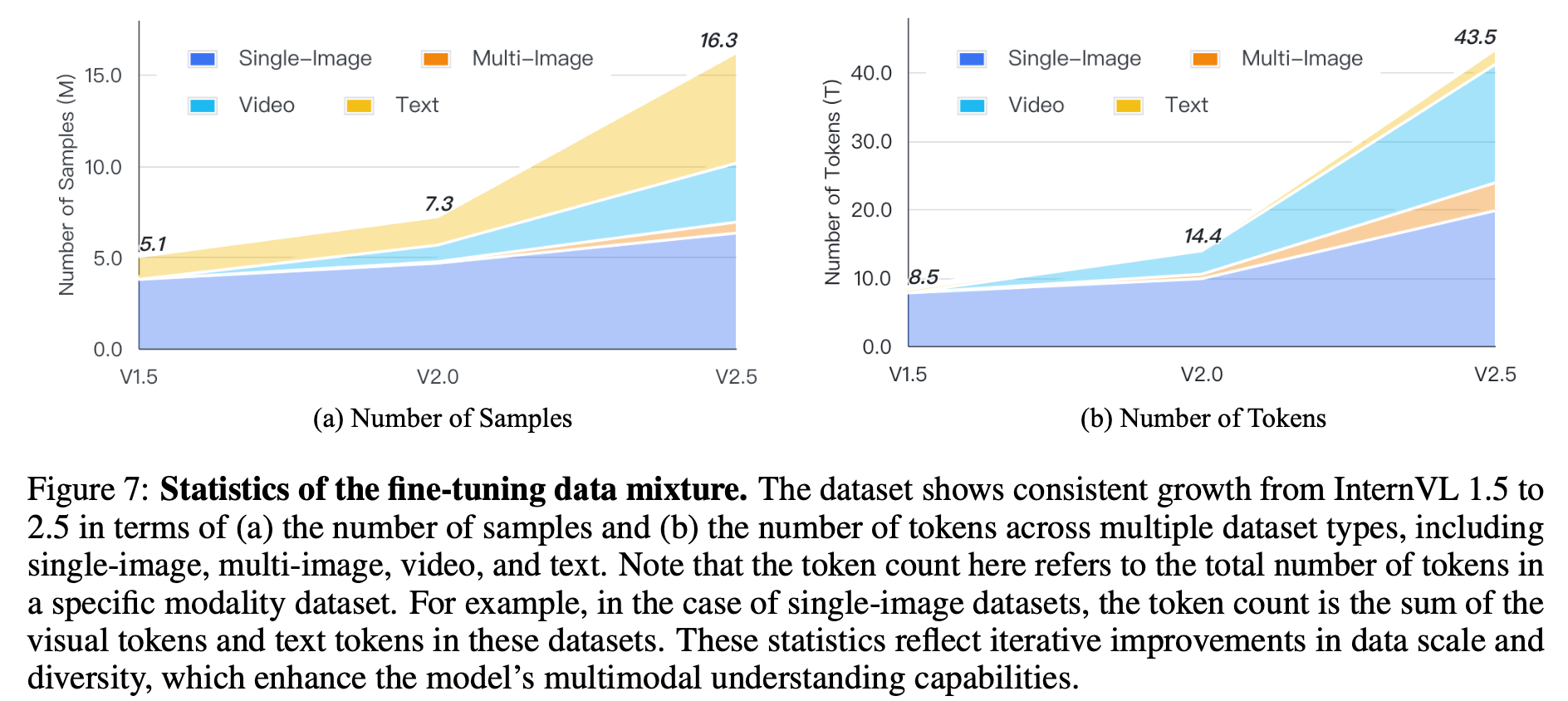
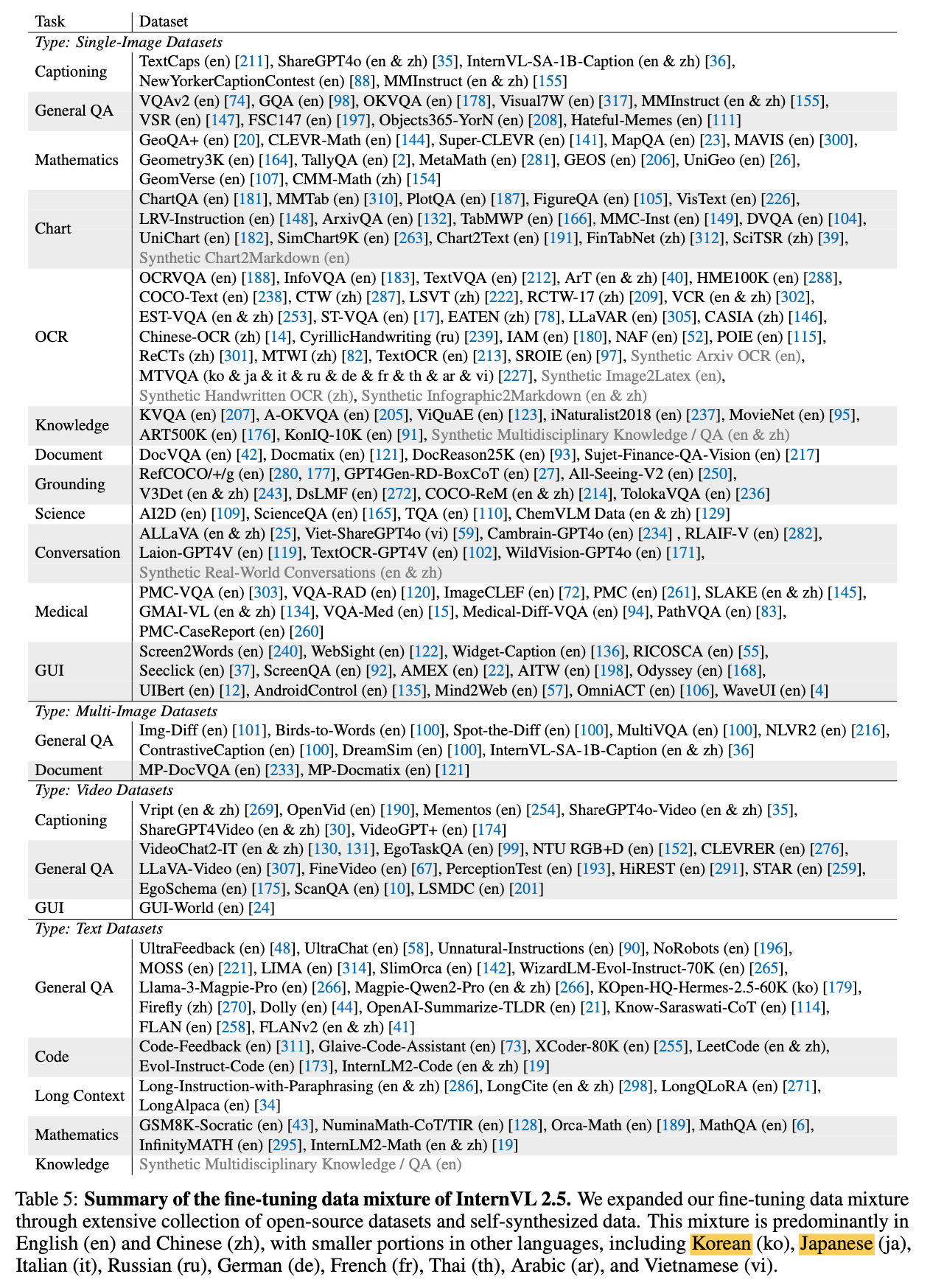
4. Experiments
-
Multimodal Reasoning (Math)
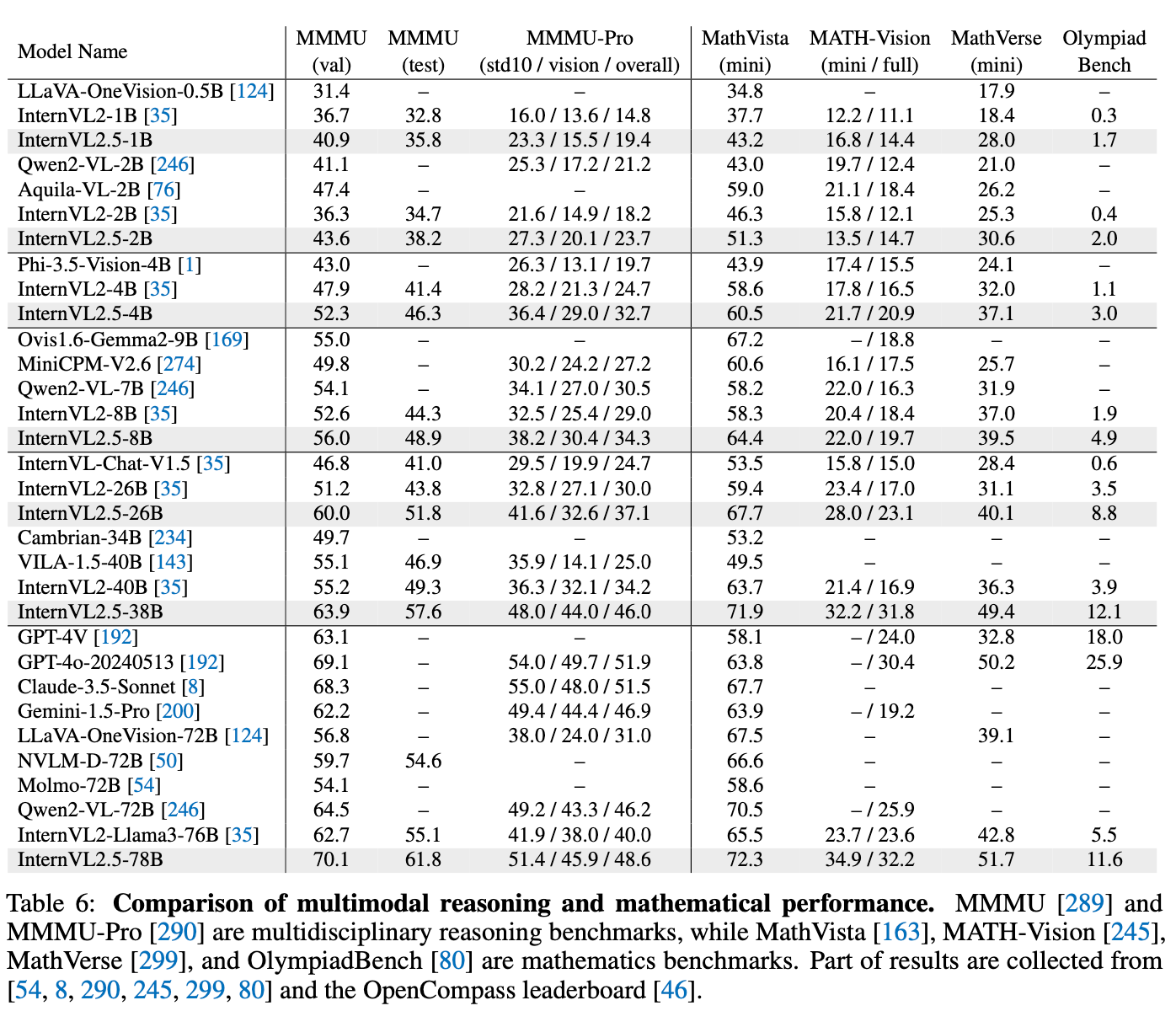
-
OCR & Document Understanding
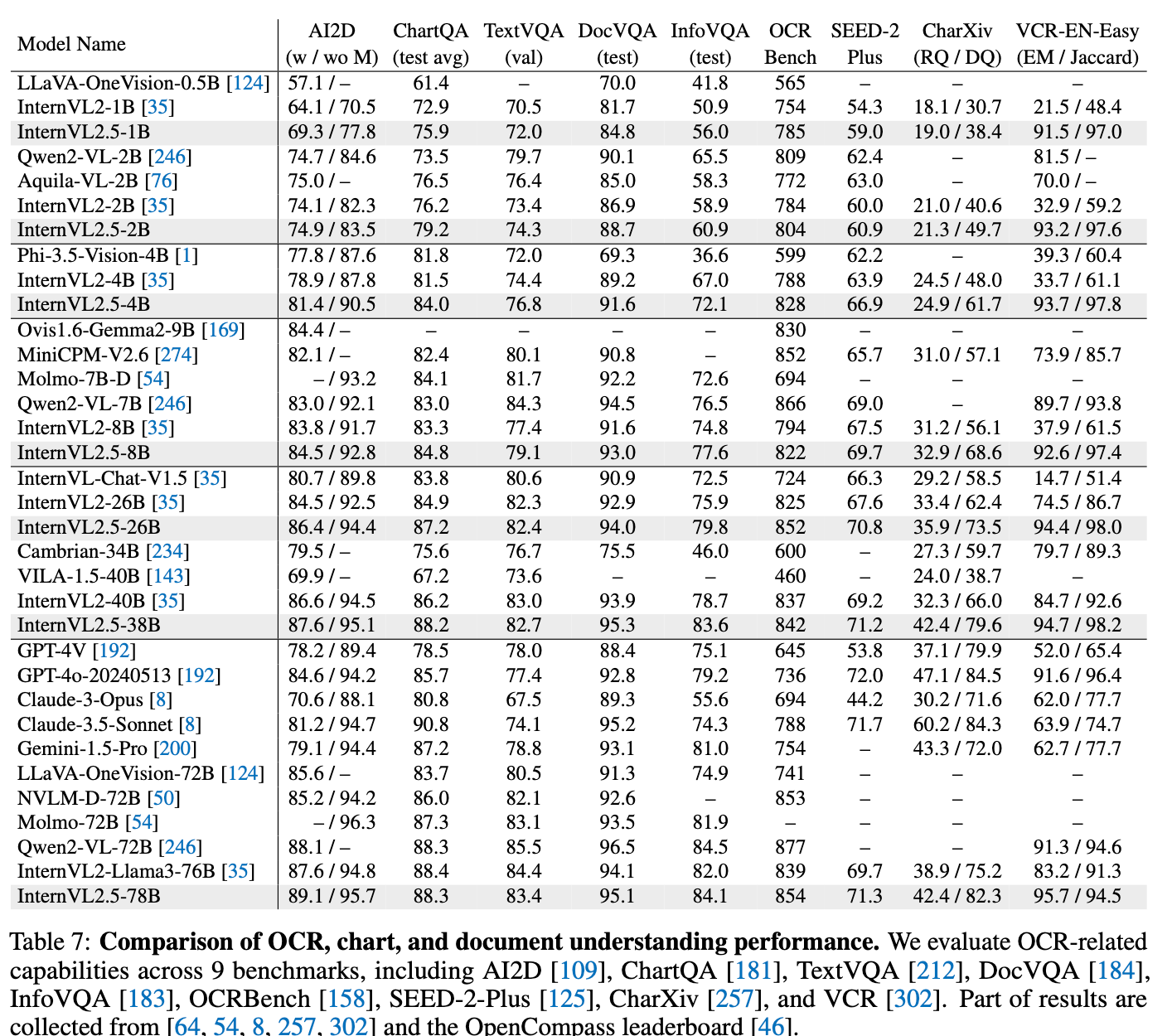
-
Multi-Image Understanding
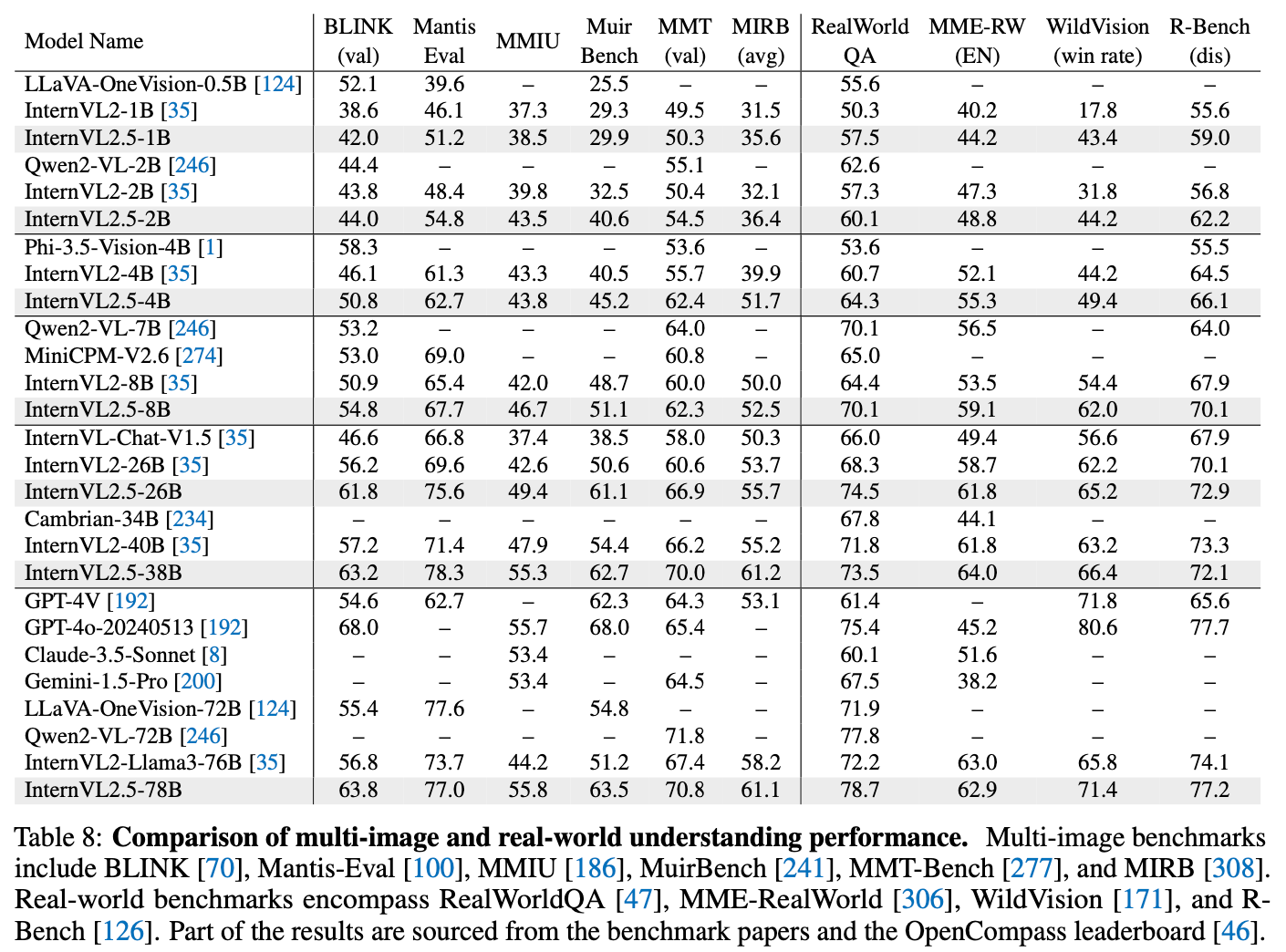
-
Comprehensive Multimodal understanding (+ Hallucination)

-
Visual Grounding
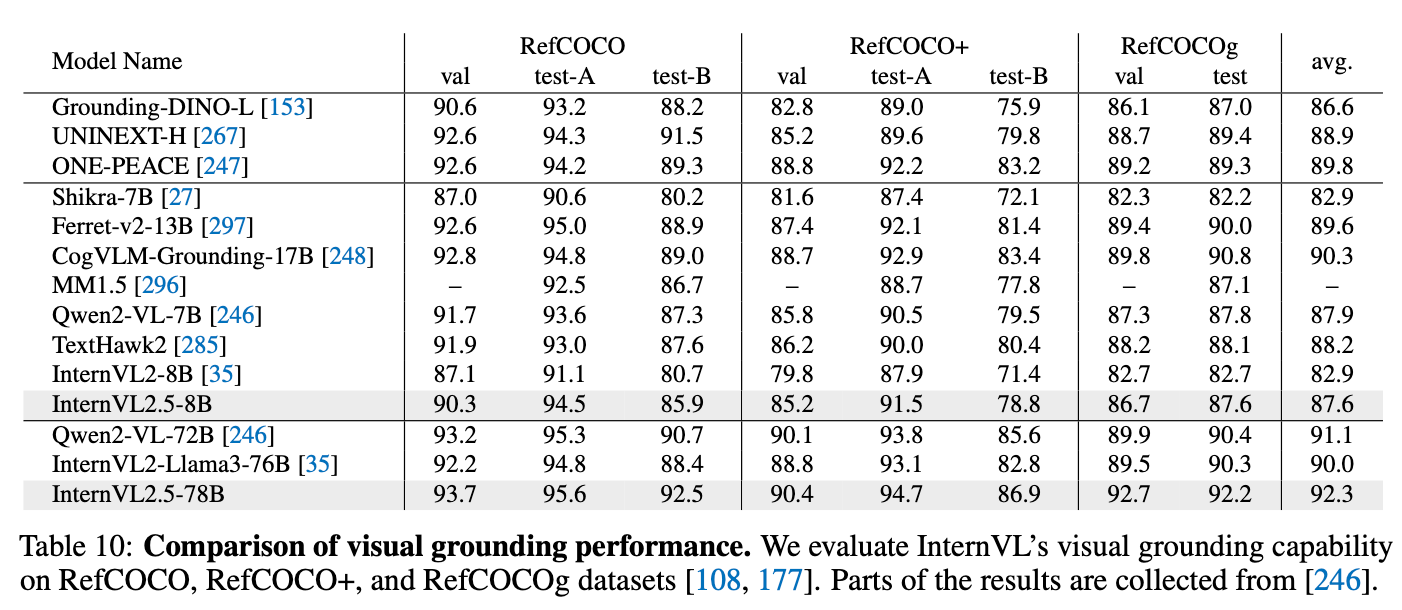
-
Multi-Lingual performance

-
Video Understanding
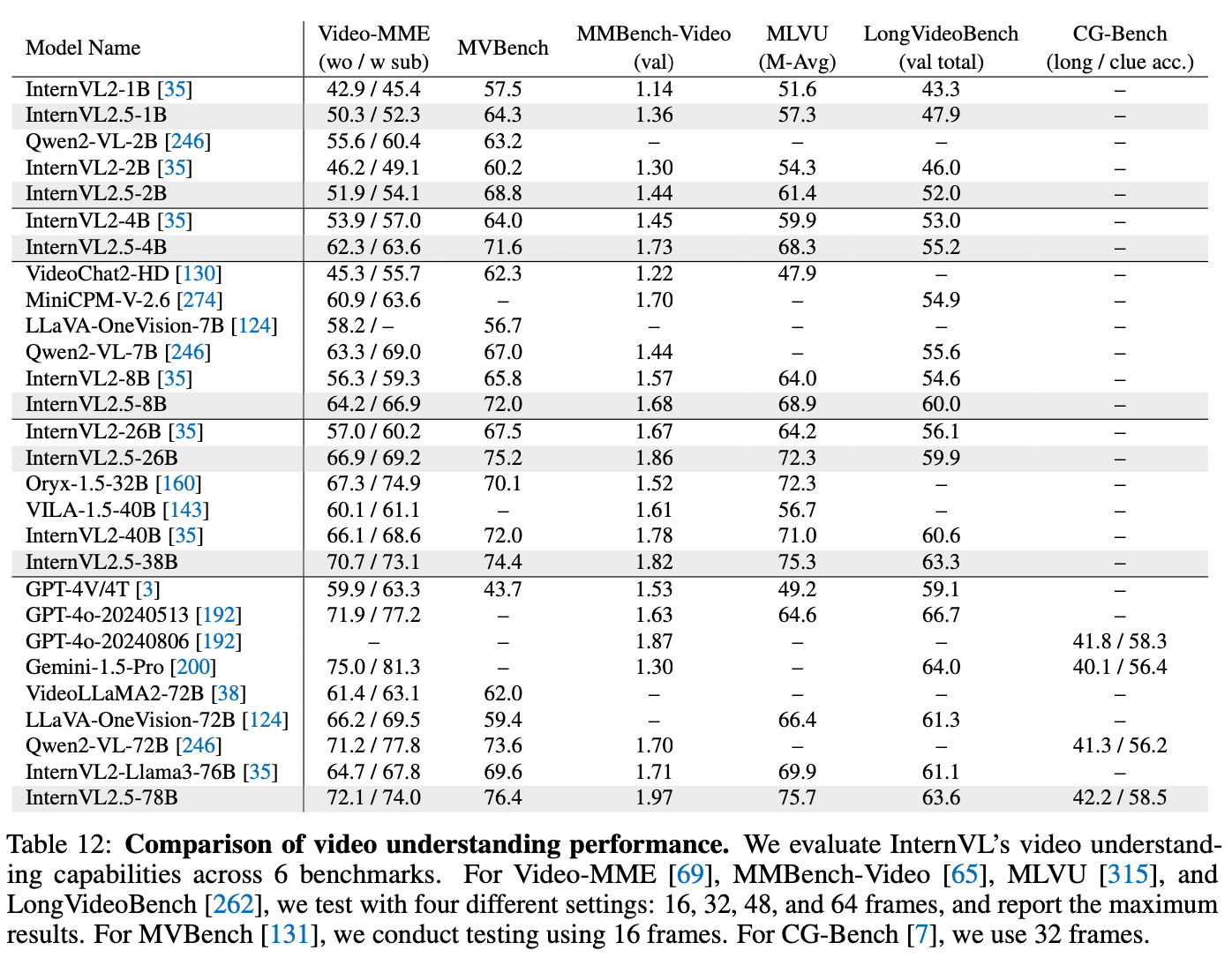
-
Vision Capability
-
Image Classification
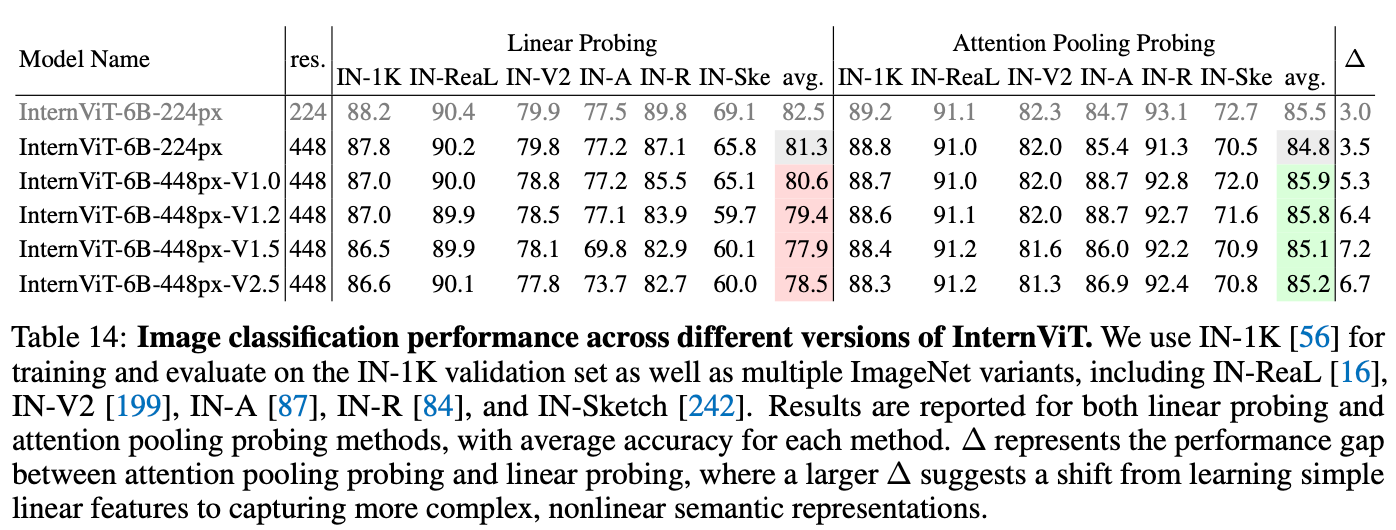
-
Semantic Segmentation

-
-
요약
